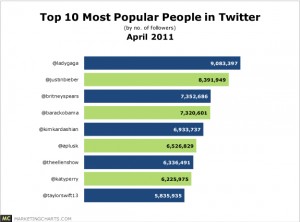A couple of weeks back, I stopped by PBS MediaShift’s first social mixer in NYC. It was held at a restaurant in the East Village, a vibrant neighborhood once known for the local squatters in Tompkins Square Park. I enjoyed seeing SF-based editor Mark Glaser and his New York-based marketing lead Dorian Benkoil whom I know from his days toiling at Media Bistro.
Others on hand that night included Craig Newmark, Stowe Boyd, Poynter’s Bill Mitchell, Mo Krochmal and TrylonSMR‘s Lloyd Trufelman. They were all in town for the Miami-transplanted WeMedia conference skedded for the next day. I took the opportunity to probe Lloyd on the state of the PR biz. Lloyd being Lloyd didn’t mince words.
 |
| Lloyd Trufelman |
He suggested that those in our biz who rely exclusively on Twitter or Facebook to advance their client’s communications goals are fooling themselves. The most buzz-worthy news memes still originate with mainstream journalists (an ecosystem that admittedly has evolved). According to Pew’s 2011 State of the Media
“News organizations—old and new—still produce most of the content audiences consume. But each technological advance has added a new layer of complexity—and a new set of players—in connecting that content to consumers and advertisers.”
Now Lloyd’s a fairly social-savvy fellow (albeit one w/o a personal Twitter feed). He produces the NYConvergence site and feed, and, like me, is one of the few in the biz who has embraced digital as a complement to traditional PR competencies.
I mean who can deny the power yielded by those in-house social media leads with huge followings? Don’t they add value as conversation catalysts for their respective enterprises?
I insisted to Lloyd that someone with tens of thousands of Twitter followers and FB friends can really be a boon to the client’s communications goals. He countered by saying that the reach of someone with tens of thousands of followers still pales in comparison to even the lowliest readership of most industry trade publications.
But what about the reverb, i.e., followers who share with their followers who share with their followers? His answer: how often do you re-tweet a corporate or branded-inspired tweet? Hmmm. Rarely.
I gave this a little more thought and began to realize that our world, or at least a portion thereof, has gone Twitter and Facebook crazy at the expense of more mainstay tactics. In fact, I’ve noticed of late an increasing number of digital start-ups that have relegated their PR chores to individuals on the sole basis of these individuals’ engagement with the social graph. No PR experience required. Just lots of followers and some modicum of fame in the tech bubble.
It’s almost akin to mounting a media relations program and only using HARO and Profnet for story leads. It’s even mildly reminiscent of the dot-com era when newbie CEOs celebrated when their company press release posted…on one of the paid wire services!
Now don’t get me wrong. Today’s PR professionals who choose to ignore the “shared” and “owned” dimensions of the communications paradigm (as complements to the tried-and-true “earned” and “paid” pieces) will do so at their own peril. But putting all your eggs in the social media basket absent the competencies that still define the profession would also be a mistake. Even Twitter’s “influence” is said to be waning (while Facebook’s is ascendent.)
Net net: My clients’ goals haven’t changed. They continue to seek a positive, branded presence in “the media” — one that creates action or advances POVs. What has changed are the means to those ends, and the nature of “the media” itself.


Hi, Some one from facebook refereed your link i have book marked it nice blogs you write see Free how to grow twitter followers here
Interesting post Peter. Its scary to think that people in the PR world would ever think to give up on traditional media. Yes, social media is going to be a part of any strategic PR camaign, but “the media” isn’t only defined by Twitter, Facebook, etc.
Great reminder about not being seduced by the “latest thing.” And something of a relief to hear that our journalist friends should not be put to pasture. Let’s continue to add to the mix strategically.
Very well said, Peter. I, too, have noticed an inordinate amount of putting the digital cart ahead of the traditional horse of late in the PR and marketing worlds. The reality is that whether you’re working on a traditional PR campaign or a digital/social campaign, the basics still matter. Those will never go away, just like the basics of good writing in journalism haven’t been cast aside in the face of a 24/7 digital media landscape. Granted, SEO and other components have altered things some, but the basics are still very relevant and absolutely necessary.
In my estimation, it’s like a time to step back a little. Those of us in PR realize that social media is here to stay and that it offers tremendous opportunities for brands. But that has to be tempered with the realization that social media is but one of many, many components of what should comprise a strategic communications strategy for a brand. Putting it above all else is unwise, especially as we begin to realize that Facebook and potentially others leave us with little ownership over our very own content.